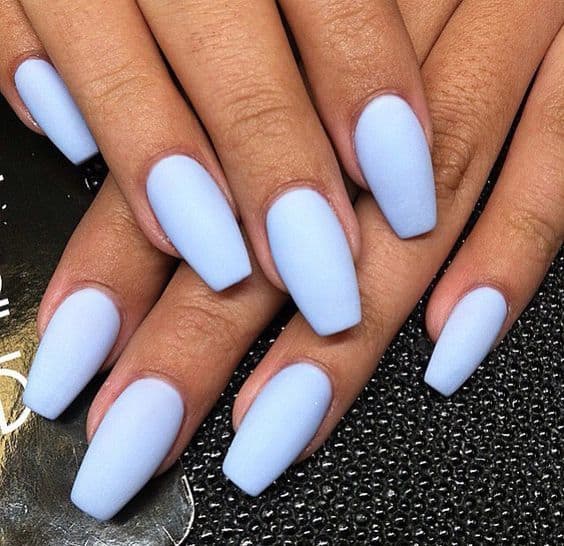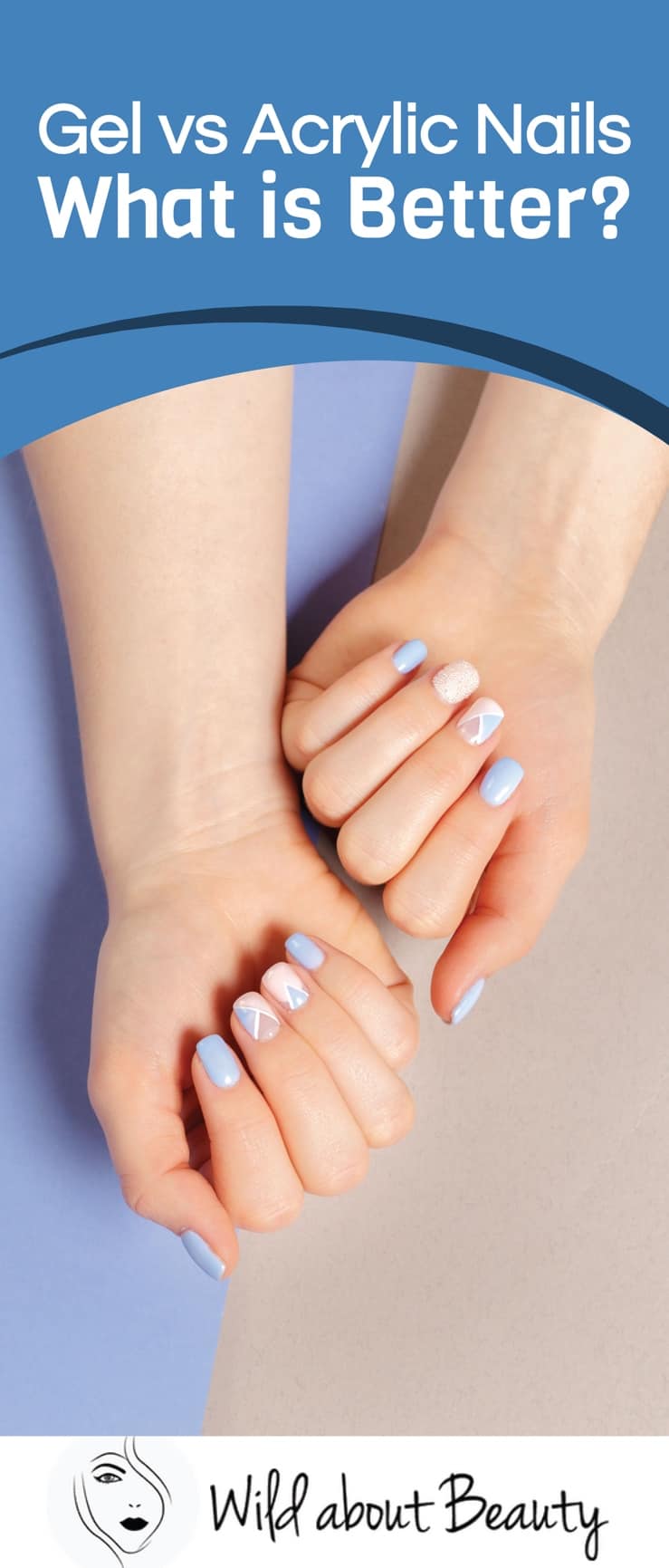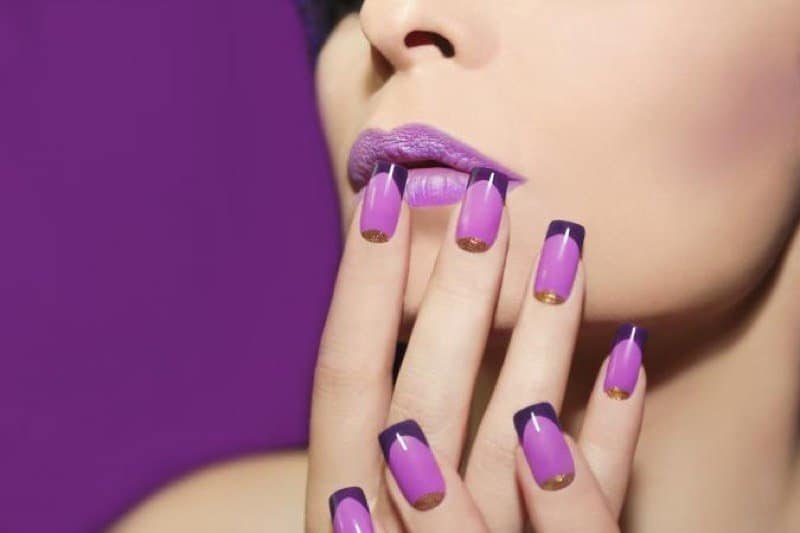Navigating the landscape of nail beauty can be intricate, especially when venturing beyond a standard manicure. We understand the allure of enhancing natural nails, but the variety of options may lead to some indecision. When considering artificial nails, one is often faced with the choice between gel and acrylics. Both serve to embellish and lengthen the natural nail, fitting to its shape or extending beyond to achieve the desired length.
We recognize that each type of artificial nail comes from distinct ingredients and necessitates different application methods. As nail technicians in the beauty industry, we’re here to dissect these options, laying out their respective benefits and drawbacks. It’s not just about choosing what looks best, but also understanding which type aligns with one’s lifestyle, nail type, and the care one’s willing to invest.
Chapter Overview
Acrylic Nails

Acrylic nails are created through a process that combines a powder polymer and liquid monomer, resulting in a durable overlay for natural nails. This mixture forms a hard, protective layer that becomes more solid when exposed to air.
Characteristics of Acrylic Nails:
- Strength: They offer a robust and long-lasting enhancement to natural nails.
- Versatility: Acrylics serve as an excellent foundation for applying nail polish and various designs.
- Maintainability: These nails can be easily refilled as they grow out and are simple to repair at home.
- Removability: Acetone can remove acrylics without professional assistance, though exposure to harsh chemicals should be managed carefully.
Despite their durability, acrylic nails have some downsides:
- Appearance: They may appear less natural compared to other nail extension options.
- Sensitivity to Application: A subpar application can lead to less-than-desirable aesthetics.
- Chemical Exposure: The process generates fumes and involves substances that may irritate some individuals.
- Nail Health: Over time, the use of acrylics can potentially lead to weakened nail beds.
Used with care, acrylic nail extensions offer a hardy and customizable option for nail enhancement, provided proper application and maintenance are observed to minimize potential drawbacks.
Gel Nails

When we consider achieving a natural-looking, glossy finish that adheres to the latest nail trends, gel nails are a leading choice in fashion. They exhibit not only a high shine but also a finish that lasts up to 14 days or even longer. The application of gel nails is a layered process beginning with a base coat, followed by gel polish for color, and concluded with a topcoat to seal the design. Each layer requires curing under a UV or LED lamp for two to three minutes to harden effectively.
The flexibility of gel nails prevents them from being as brittle as other artificial nails, positioning them as a more protective layer over our natural nails. Moreover, their capacity to maintain a freshly-manicured appearance, complete with a choice of diverse nail designs and colors, makes them popular for those wishing to sport an oval, almond, or even a coffin-shaped style, without frequent salon visits.
Here are several tips for maintaining gel nails:
- Apply cuticle oil regularly to nourish the nail bed.
- When wearing gel extensions or hard gel, refrain from rough use to preserve them.
- Opt for a natural look by choosing soft, natural-looking colors.
Despite the perks, we should acknowledge a few considerations. Gel nails can be more expensive and could potentially damage the nails if removed improperly or used excessively. For repairs, professional assistance at salons is advisable, as gel nails cannot be fixed at home.
Gel vs Acrylic Nails – What is the difference?
How do they look and feel
- Acrylics may not resemble natural nails and can cause soreness in the nail beds during curing.
- Gel nails offer a more natural and glossy finish, and are thinner, mimicking the consistency of nail polish for a strong finish without bulkiness.
What is the price of the nail?
- The cost for acrylics ranges from $30 to $60 for a full set, with monthly fill-ins typically at half the price.
- Gel nails range between $25 to $60 per application, and due to their nature, require this cost each time, unlike acrylics.
Do they damage your nails?
- Acrylics are less flexible and can lead to potential damage to natural nail beds.
- Gel nails are more flexible than acrylics, offering strength without extreme rigidity, minimizing damage.
How long do they last?
- Properly applied acrylic nails require monthly maintenance.
- Gel nails remain up to 20 days, after which the natural nail growth becomes noticeable.
How are they applied?
- Acrylics are preformed and adhered to natural nails.
- Gels are applied and shaped during the manicure, not premanufactured.
Is there a strong odor?
- Acrylic nail application involves chemicals and fumes, emitting strong odors.
- Gel nails are odorless, with no fumes, presenting a more environmentally-friendly option.
Can you easily repair them?
- Acrylic nails can be repaired at home, maintaining their appearance until the next salon visit.
- Gel nails generally require professional repair at a salon.
How are they removed?
- Acrylic nails mostly undergo a soaking process for removal, avoiding filing.
- Gel nails typically need to be filed off, though some versions allow for soaking.
How are they cured?
- Acrylic nails are air-cured over 24 hours but are dry to the touch immediately.
- Gel nails cure quickly under UV light and are not generally viable for at-home application without the proper equipment.


